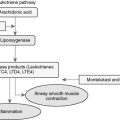CHAPTER 16 Kidney Disorders
Table 16-1 National Kidney Foundation Kidney Disease Outcomes Quality Initiative (NKF KDOQI™) Staging System for Chronic Kidney Disease
| Stage | Description | Glomerular Filtration Rate (GFR) (mL/min/1.73 m2) |
|---|---|---|
| 1 | Kidney damage with normal or increased GFR | ≥90 |
| 2 | Kidney damage with a mild decrease in GFR | 60–89 |
| 3 | Moderate decrease in GFR | 30–59 |
| 4 | Severe decrease in GFR | 15–29 |
| 5 | Kidney failure | <15 (or dialysis) |
Reprinted from American Journal of Kidney Diseases, 39(2):35, 2002, with permission from Elsevier.
PATIENT PROFILE
Allergies: No known drug allergies (NKDA)
Diabetes type 2 for 10 years, has been insulin dependent for 3 years
Alcohol use: Occasional beer on weekends
Employment: Postal carrier, job requires several miles of walking daily for deliveries
Medications before this admission:
Furosemide 40 mg PO once daily
Humulin N insulin 20 units SQ in morning and 10 units in evening
Insulin aspart, SQ sliding scale with meals; amount adjusted based on carbohydrate intake
Calcium acetate 667 mg, 2 tablets PO three times daily at meals
PATIENT PROFILE QUESTIONS
REVIEW QUESTIONS
(Answers and Rationales on page 364.)




